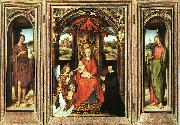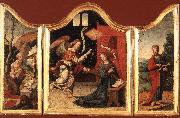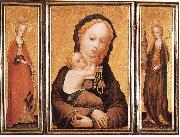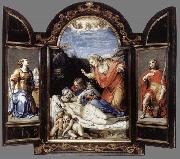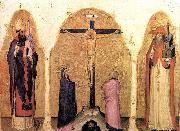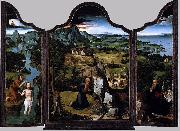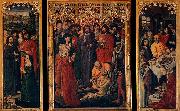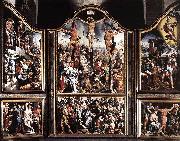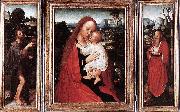Le Pétrole en gros ne Peignant pas de Minimum |
|
|||||||||||||||||||
|
|
|||||||||||||||||||
|
1485 Le Musée dHistoire dArt, Vienne 1485 Art History Museum, Vienna |
|||||||||||||||||||
|
|
|||||||||||||||||||
|
|
|||||||||||||||||||
|
|
Lambriser Museo Cerralbo, Madrid Panel Museo Cerralbo, Madrid |
||||||||||||||||||
|
|
|||||||||||||||||||
|
|
|||||||||||||||||||
|
|
1400-15 Détrempe sur le bois, 58.9 x 39.5 cm 1400-15 Tempera on wood, 58,9 x 39,5 cm |
||||||||||||||||||
|
|
|||||||||||||||||||
|
|
|||||||||||||||||||
|
| 76,4 x 24,5 cm (each wing) Wallraf-Richartz Museum, Cologne Jan de Beer was a Flemish painter, one of the Antwerp Mannerist school many of whose paintings were formerly ascribed to him. The central panel depicts the Adoration of the Shepherds. On the left wing is St Felicity with her sons and on the right is St Ursula with her followers. The composition and style are characteristic of Antwerp Mannerism of the early 16th century. Author: BEER, Jan de Title: Triptych , 1501-1550 , Flemish Form: painting , religious | ||||||||||||||||||
|
|
|||||||||||||||||||
|
|
|||||||||||||||||||
|
| 1410 Panel, 70 x 16 cm (each wing) Heinz Kisters Collection, Kreuzlingen It is unusual for the decoration on the backs of the wings to play an important thematic role in the visual programme of a triptych like this, but it does so in this case. When the triptych is closed one is presented with a moving depiction of Christ carrying the Cross, painted on a layer of red which was usually the support for gold leaf. Here the central motif has been isolated from the theme of the Carrying the Cross, which was of crucial importance for Late Medieval devotion. Having been isolated from the narrative, the image of the cross-bearing Christ acquires a validity unconnected with time or place.Artist:MASTER of Saint Veronica Title: Triptych (closed) Painted in 1401-1450 , German - - painting : religious | ||||||||||||||||||
|
|
|||||||||||||||||||
|
|
|||||||||||||||||||
|
| 1604-05 Oil on copper and panel, 37 x 24 cm (central panel), 37 x 12 cm (each wing) Galleria Nazionale d'Arte Antica, Rome The central panel shows the Piet? while on the wings St Cecilia (left) and St Ermenegildus are represented. This small triptych originally belonged to Cardinal Odoardo Farnese, and the Farnese inventories document it as a work of Annibale Carracci as early as 1619. The attribution to Annibale was unquestioned until 1956 when, for stylistic reasons, the tabernacle was assigned to the Carracci workshop and given specifically to the hand of Innocenzo Tacconi. Despite this, the general conception of the work was attributed to Annibale on the basis of a drawing preserved at the Louvre (Paris). More recently, the documentary research has proven that the painting was commissioned directly from the artist by Cardinal Farnese sometime after 1603, the year in which he was obliged to renounce his claims to the succession to the English throne. Considering the importance of the commission, it seems difficult to argue against attribution to Carracci himself. The high quality of the Piet?and stylistic comparison of this central panel to Annibale's many other treatments of the subject lead to the assignment of this part of the execution to the master. It is, however, possible that Annibale allowed assistants (Innocenzo Tacconi or Antonio Carracci) to work on secondary panels, as these are slightly different in some of the details of execution.Artist:CARRACCI, Annibale Title: Triptych Painted in 1551-1600 , Italian - - painting : religious | ||||||||||||||||||
|
|
|||||||||||||||||||
|
|
|||||||||||||||||||
|
| 1604-05 Oil on copper and panel, 37 x 24 cm (closed) Galleria Nazionale d'Arte Antica, Rome The closed triptych represents St Michael the Archangel (left) and the Guardian Angel (right).Artist:CARRACCI, Annibale Title: Triptych Painted in 1551-1600 , Italian - - painting : religious | ||||||||||||||||||
|
|
|||||||||||||||||||
|
|
|||||||||||||||||||
|
| 45 x 56 cm Gallerie dell'Accademia, Venice Much more of an innovator than either Catarino or Lorenzo Veneziano was Jacobello Alberegno, who in the Triptych with Crucifixion and Saints, his only signed work, reveals himself to be an artist of penetrating refinement. If it is true that the two lateral saints, St Gregory and St Jerome, are examples of stylized Gothic figures, the images of the small central panel display a naturalness worthy of one of the best of Giotto's disciples. An extraordinary human dimension seems to govern the expression of sentiments in the picture: a grief-stricken St John the Evangelist clutches his cloak to his breast while the Virgin extends imploring arms and stares transfixed with anguish at her crucified son. , ALBEREGNO, Jacobello , Triptych , 1351-1400 , Italian , painting , religious | ||||||||||||||||||
|
|
|||||||||||||||||||
|
|
|||||||||||||||||||
|
| 85,3 x 95 cm (central panel), 86,3 x 41 (wings) Wallraf-Richartz Museum, Cologne The painter of this altarpiece, the central panel of which depicting the extended Holy Family ('Holy Kinship') is referred to as The Elder Master of the Holy Kinship. , UNKNOWN MASTER, German , Triptych , 1401-1450 , German , painting , religious | ||||||||||||||||||
|
|
|||||||||||||||||||
|
|
|||||||||||||||||||
|
| Date c. 1520(1520) Medium Oil on wood Dimensions Height: 118 cm (46.5 in). Width: 81 cm (31.9 in). (central) cjr | ||||||||||||||||||
|
|
|||||||||||||||||||
|
|
|||||||||||||||||||
|
| Date 1461(1461) Medium Oil on wood Dimensions Height: 175 cm (68.9 in). Width: 134 cm (52.8 in). (central) cjr | ||||||||||||||||||
|
|
|||||||||||||||||||
|
|
|||||||||||||||||||
|
| Date first half of 16th century Medium Oil on wood cjr | ||||||||||||||||||
|
|
|||||||||||||||||||
|
|
|||||||||||||||||||
|
| Date first half of 16th century Medium Oil on oak panel Dimensions Height: 64 cm (25.2 in). Width: 49 cm (19.3 in). (central panel) cjr | ||||||||||||||||||
|
|
|||||||||||||||||||
|
|
|||||||||||||||||||
|
| 1470(1470) Medium oil on panel Dimensions Height: 96.4 cm (38 in). Width: 147 cm (57.9 in). (central) cyf | ||||||||||||||||||
|
|
|||||||||||||||||||
|
Hans Memling
Netherlandish Northern Renaissance Painter, ca.1435-1494 Triptych 1470(1470) Medium oil on panel Dimensions Height: 96.4 cm (38 in). Width: 147 cm (57.9 in). (central) cyf |
|||||||||||||||||||
|
Related Paintings to Hans Memling :. |
|||||||||||||||||||
|
|
|||||||||||||||||||
|
|
|||||||||||||||||||
|
CONTACTER DES Etats-Unis |







